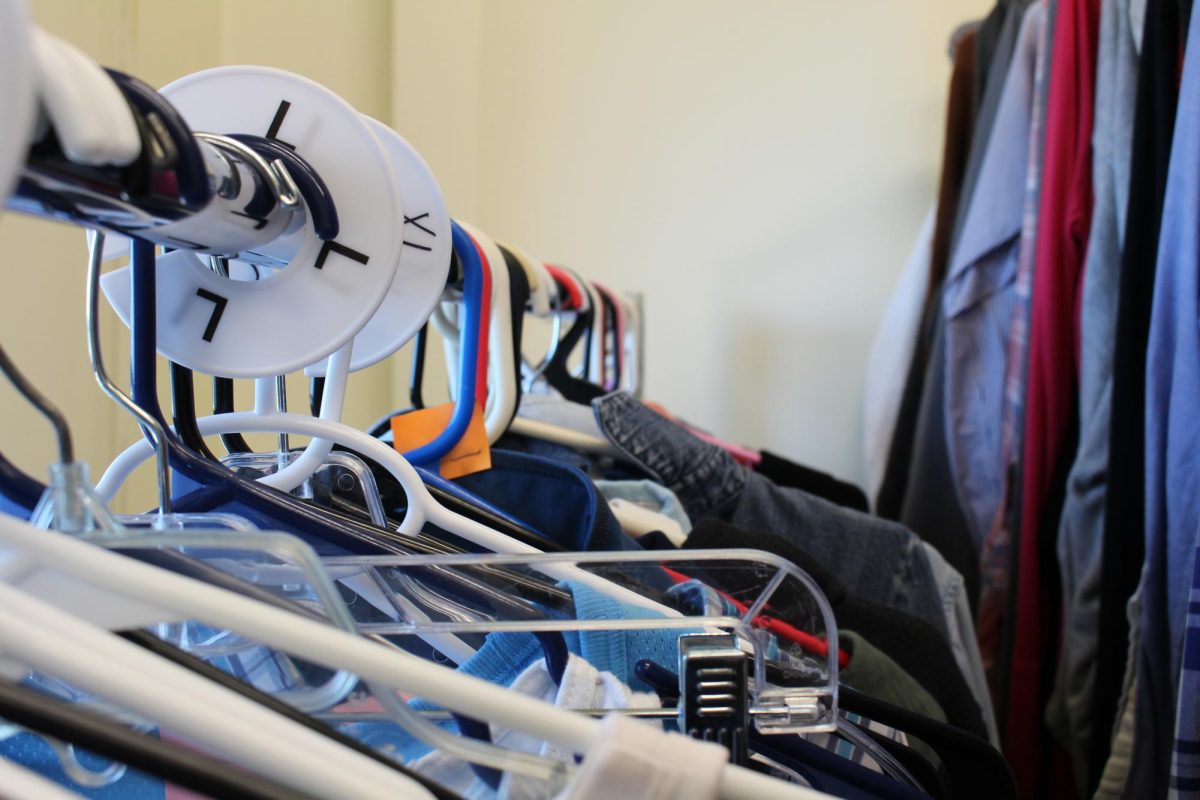Mad Style: Conscious Consumerism and Fashion
November 8, 2019
Everyone wears clothes. Fast fashion– the mass-production of cheap, disposable clothing– makes young consumers like me feel constantly out of style and encourages us to keep buying more. After the clothes feel out of date, they are thrown away and burned in landfills. This infinite cycle of production never slows.
Second to the oil industry, the fashion industry is the second leading cause of global pollution, which only increases as the industry grows, as seen in Green Peace’s 2011 investigation into the global impact of clothing. There are ways for people to better understand the impact that their purchases have on the climate and to change their spending and consuming habits to be more conscious of their global impact.
Senior Effi Jacobsen is conducting her senior studies project about the fashion industry and the environment and is an activist who advocates for the awareness of climate change.
“The fashion garment pollution comes from every single stage of the production of garments,” says Jacobsen. “From the fiber production, spinning, weaving, fitting, assembly, packing, shipping, distribution and then after use— every part of that has carbon emissions and chemicals that affect the air, water, soil and people around it.”
Jacobsen has found that the production of textiles has a detrimental impact on the environment. Cotton, polyester, nylon and wool production (common materials for clothing) require a surplus of water and almost always chemicals. The fashion industry uses 1.5 trillion liters of water yearly and 200 tons of fresh water is needed to dye one ton of fabric, according to Sustain Your Style, an independent platform for awareness of current practices of the fashion industry.
Nylon and polyester are plastics, so they are created from petroleum and fossil fuels that release chemicals like hydrochloric acid, sulfur dioxide, dioxins and furans that contribute to global warming. Spinning raw materials into yarns, weaving them into fabrics and applying dyes are energy-intensive processes reliant on water and chemicals.
The labor practices used to mass-produce clothes are often unethical and unmonitored, such as larger companies like Forever 21 and H&M. Unethical practices include child labor, sweatshop companies, below ethical wages, and inhumane working conditions. This makes the production of clothing fast and cheap, only making it easier to consume more and more.
The delivery of clothes to the consumer produces even more pollution. Packing boxes are usually destroyed after shipping, plastics are used to pack and wrap garments and the transport of the items also requires vehicles that burn gas.
It is only after the process of making the fabrics, processing and shipping them all over the world that the clothes are then worn, thrown away and often burned. Textiles take up nearly 5 percent of landfill space, according to a collection of data compiled by EDGE Fashion Intelligence, when, in fact, all textiles are recyclable. Materials like nylon, polyester, and cotton, in particular, push more gas into the air than any other material due to their unnatural components like plastics woven into materials. When clothes are thrown away, less is recycled and more textiles are burned while the fashion industry only gains more money by selling clothes even faster.
Consumers are purchasing twice as much as they did fifty years ago and keeping the items for half as long, according to Dana Thomas in her book Fashionopolis. More than 30 percent of clothes are never sold and end up in landfills all over the world. As consumers, we can change to be conscious of our environmental footprint.
“Know what you are buying, buy smart, and buy less,” says Jacobsen. “When you do buy, buy second hand, thrift and save money.”
Thrifting, second-hand shopping, and up-cycling are the most effective ways to be sustainable while purchasing clothing. By thrifting, you can buy ten items for under $20, or a t-shirt for 50 cents, when a single new shirt can cost thirty times as much. There is not a shortage of clothes in thrift stores, including Goodwill in Evanston or Village Discounts in Chicago— so no matter who you are, this is the best option to maintain an interesting yet conscious closet.
Before throwing away clothes, consider giving them to friends, family or a local second-hand store (Goodwill recycles fabrics). If you do buy new clothes, be sure to consider the fabrics you buy and the places you shop in. Baptist World Aid Fashion guide provides a comprehensive look at hundreds of major companies and grades them based on their environmental and ethical aspects.
The grades awarded are “a measure of the efforts undertaken by each company to mitigate the risks of forced labor, child labor and worker exploitation in their supply chains, as well as protect the environment from the harmful impacts of the fashion industry. Higher grades are given to companies with ethical sourcing systems that, if implemented well, should reduce the extent of worker exploitation and environmental harm,” according to The Baptist World Aid Ethical Fashion Guide FAQ. Companies with “A” ratings include Adidas, Patagonia, Zara and Champion, which are more environmentally friendly and ethical producers; Abercrombie, Forever 21 and Hollister Co. fall further down on the list with “D” ratings.
The fashion industry is fueled by consumers who can affect clothing’s impacts has on the environment. When you purchase clothes, old or new, consider all of the aspects of production. Change is brought by educated and aware consumers who are willing to put in the effort to make even a small difference. Shop smart, buy reused and help reduce climate change one shirt at a time.











